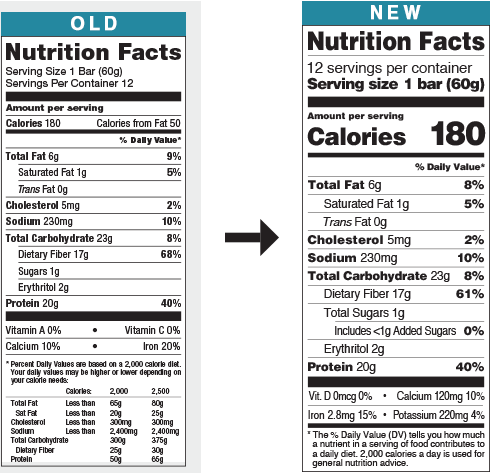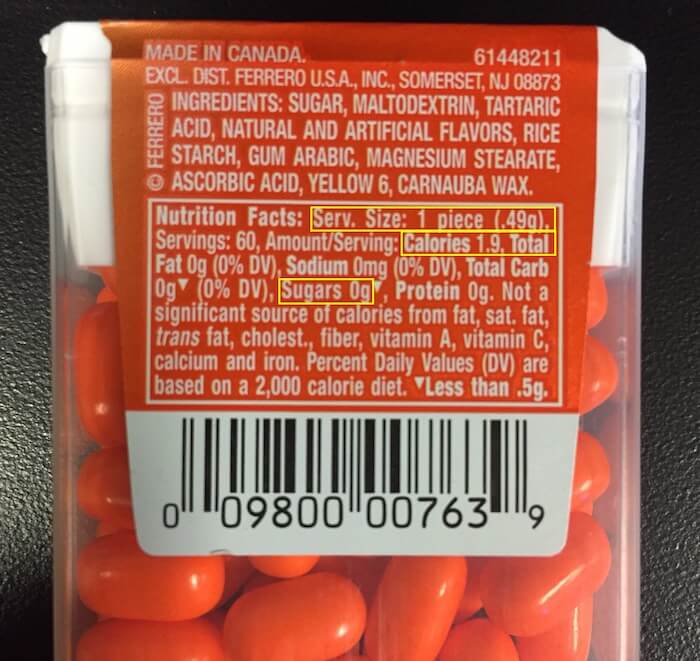In this article, I argue that for simplicity, people should count all carbs (including sugar alcohols) as 4 kcal per gram, and ignore the net carb concept. Only counting ‘net carbs’ is a mistake.
If you google, “what are net carbs?” you currently get this pop up first:
“The term ‘net carbs’ simply refers to carbs that are absorbed by the body. To calculate the net carbs in whole foods, subtract the fiber from the total number of carbs. To calculate the net carbs in processed foods, subtract the fiber and a portion of the sugar alcohols.”
This seems to be a fair representation of what is parroted around the internet fitness industry. But it suggests fiber and sugar alcohols are calorie-free, which is incorrect.
Counting Fiber
Some fiber, while not digestible in the small intestine, is fermented in the colon, and that byproduct provides energy.
However, determining which fibers provide calories and exactly how many is quite difficult, so I recommend you count fiber as regular carbohydrate.
Fiber is good shit. It helps you poop, is important for gut health and nutrient absorption, and helps with satiety.
My fiber intake recommendations are:
- As a minimum 25 g/day for women and 38 g/day for men (the FDA guidelines).
- Don’t go over 20% of your carbohydrate intake (which is particularly relevant when bulking).
Even if this doesn’t accurately reflect the energy intake from carbohydrate, it doesn’t matter because consistency is what is important if you are tracking, and the difference this will make in daily energy intake tracking is very small.
Counting Sugar Alcohols
Sugar alcohols are commonly used as thickeners and sweeteners. They’re attractive to manufacturers as they allow them to advertise a product as having “zero sugar.” This benefits them because the masses have been brainwashed to be scared of sugar (which will have to be a rant for another day), and it allows them to suggest a product is ‘keto-friendly’ (not that I am a fan), which is rather misleading because, though to a lesser extent, they still affect blood sugar levels.
There are many types of sugar alcohols, all with different calorie values. (Arabitol has 0.2 kcal per gram, glycerol has 4.2 kcal per gram.) EU labeling requirements assign a blanket value of 2.4 kcal/g to all sugar alcohols, which is close to the mean and median average across all types, which is roughly 2 kcal/g.
So, if you pick up a protein bar, for example, that has 17 g of carbs with 4 g net carbs listed, and you only count this as 16 kcal, you’re kidding yourself.
If I google the most popular protein bar, I get Quest Nutrition. I’ll choose the chocolate brownie variety. Here’s the label:

The calories are 180 kcal per bar. The calories from fat and protein add up to 134 kcal, leaving 46 kcal for carbs. This means they have counted the 23 g of carbs within as 11.5 g of carbs, i.e., half, which is a good heuristic.
If someone were to subtract the 17 g of fiber and 1 g of sugar alcohol, this would leave them counting just 5 g of carbs for this product, putting them 26 kcal short. If they eat a lot of processed food and repeat this same mistake multiple times per day, every day, this will lead to a big difference in how many calories they think they’re consuming vs. reality.
So, while you could count sugar alcohols as 2 kcal per gram, and I suppose you could choose to count fiber as 2 kcal per gram as well, I suggest you keep things simple and count them both as regular carbs.
This way, when you’ve been dieting for a while, and your brain has started getting exceptionally creative with food math, you’ll be less incentivized to try to do sneaky shit like looking for the highest sugar alcohol and fiber-containing processed foods, and more incentivized to cook real food. The latter is going to be more micronutrient dense and likely keep you fuller for longer.
And as over-consumption of sugar alcohols, just like with fiber, can lead to bloating, terrible farts and diarrhea, you’ll smell better.
So think twice before smashing that pack of ‘sugar-free’ gummy bears, eh? 💩
Lastly, Beware Of This Labeling Loophole!
There’s an FDA rule that says if a food “serving” contains less than 5 kcal or 0.5 g of sugar, it can be labeled as calorie-free and carb-free.
So for example, as one Tic Tac contains a fraction less than 0.5 g, they get to claim sugar and carb-free, which you’ll see on the label:

(They could also list them as calorie-free, but they don’t.)
Point being: don’t munch a box of foods like this (mints, gums, etc.) and think they’re calorie-free. They aren’t.

Privacy policy.